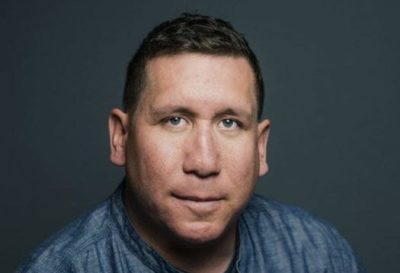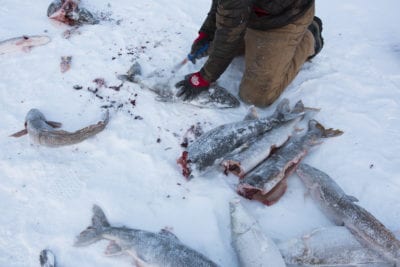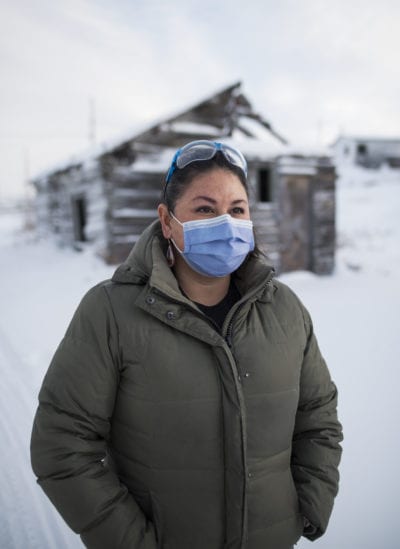"We are in the best place to be right now, but also potentially the worst," Pat Kane, a Yellowknife based photographer, said of the NWT's pandemic circumstance.

Because of our geography, Kane said, "we are able to inherently self-isolate."
With limited health care resources in this jurisdiction, however, "we are so vulnerable."
The dichotomy of this fragile balance is the subject of Kane's latest undertaking, a National Geographic Society-funded project demonstrating our territory's state as one of the only regions in North America without a major Covid-19 outbreak.

The National Geographic Society's emergency fund is a set of US $1,000 to $8,000 grants supporting journalists reporting the impact of the pandemic covering social, emotional, economic and equity issues to tell "stories of inequities that Covid-19 has brought to light," the National Geographic Society writes on its website.
Kane has until the end of May to complete his photo-essay illustrating the NWT's tenuous Covid-free zone.
Since the project is for a worldwide audience, many of the strengths and vulnerabilities he intends to highlight are things that residents likely already know.
The photo essay will put particular focus on Dene communities and how staying connected to the land, caring for Elders and using traditional medicine has been providing the physical and mental care residents need. On the other hand, "Western structures have left Dene particularly at risk," he said, "especially when it comes to health care, food security, housing needs and high cost of living."
The biggest challenge, Kane said, is going to be narrowing the project's focus.
"What are the important stories not just for the Northwest Territories to tell to the world, but to tell to us as well," he said. "What are the stories within the stories, what are the things that might surprise even Northerners."
To achieve that, Kane has set out a list of scenes and themes he aims to explore: health care, education, life in Indigenous communities and Indigenous world views on the pandemic. He said he'll start by reaching out to individuals and organizations that fall under those umbrellas while allowing, to a point, for the chips to fall where they may.
"Many of the best stories are when you happen to be somewhere and fall into a really interesting situation," he said. "Flexibility is a good thing."
Housing, in particular, is an issue that Kane is looking to showcase.
"How are you supposed to isolate when you have 10 people in a home in Behchoko, for example," he said.
The geography and issues that accompany our Northern towns are of interest to other parts of the world, Kane explains, "but where we live is also visually interesting."
Images of harvesters procuring meat, overcrowded homes, "these are visuals that we're used to," he said, "but for the rest of the world, they don't really get to see these images. It's a way to showcase the Northwest Territories and the land."

For all of the work Kane is putting into the project, it's not yet clear where the final product will be published.
Since there are a number of fund recipients working on Covid-related projects around the world, the chances of having his photos run in the National Geographic magazine are low, Kane said. However, the images may appear on National Geographic's social media or website.
Kane, whose work has appeared in National Geographic, Canadian Geographic, the Atlantic, Maclean's, The Narwhal and exhibits around the globe, said he's "excited" for the opportunity.
He said only a handful of Canadians were selected for the fund, making the stature of the project even more prominent.
"It's pretty daunting but also super exciting," Kane said. "I'm honoured that I'm doing this."